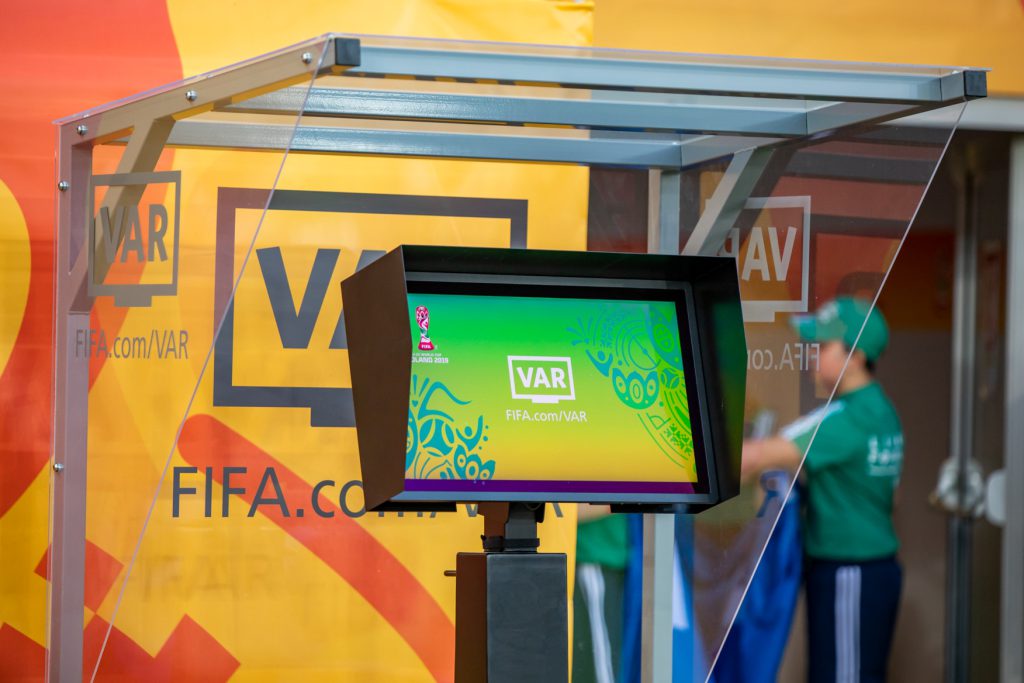Is there a secret to longevity? This health expert says 1,000% yes
In the era of social media, post-COVID, and with mental health at the forefront, a shift is taking […]

Four and a half years ago, FIFA announced the introduction of the Video Assistant Referee (VAR) at the 2018 FIFA World Cup, touting the move to be revealing the future of football. The technology was not widespread at that point, but it definitely looked like it was there to stay.
Now, it is surely hard to imagine a highly competitive match played without the VAR, which has become a mainstay in football and helped develop the sport, correcting the inherent mistakes made by human eyes and minds.
Basically, at its core, the VAR system is implemented through the video feed of the match, with two referees monitoring anything that is happening on the pitch. It can intervene in decisive moments, such as the awarding of penalties and red cards, while it also reviews all goals to check if the ball was out of play or the player scoring was offside.
Its impact has been evident in the previous edition of the FIFA World Cup, with 29 penalty kicks awarded throughout the competition, with VAR helping referees take a decision 11 times. The number of penalties awarded also registered an uptick from 13 penalties at the 2014 FIFA World Cup, improving the number by more than 100%.
According to the official analysis published by FIFA, VAR helped overturn 17 out of 20 wrong decisions at the World Cup 2018, being hailed as a tool that will help football improve and get the wrong decisions canceled from football altogether.
“This is progress, this is better than the past. VAR is not changing football, it is cleaning football. It is difficult to think of the World Cup without VAR, it has been certainly a more just competition. The goal scored from an offside position is finished in football, at least in football with VAR,” said Gianni Infantino, the FIFA President, during the official closing press conference at the 2018 FIFA World Cup, played in Russia.
Encouraged by the success recorded at the previous tournament and with the technological developments in football in constant progression, FIFA also approved the use of semi-automated offside technology, to further improve the decision taken by referees during matches.
In split seconds, assistant referees, who march around the touchline, need to take crucial decisions for the matches, largely relying on intuition and experience, as the human eyes cannot simply see everything on the pitch, especially as the game gets faster and faster.
Therefore, the 2022 FIFA World Cup, due to be played in Qatar between 20 November and 18 December, will be the first one in history to use semi-automatic offside technology, which, according to FIFA, is ”a support tool for the video match officials and the on-field officials to help them make faster, more reproducible and more accurate offside decisions”.
The technology has also been tested and implemented with success in the most important club competition in Europe, the UEFA Champions League, earning the praise of the stakeholders, due to its transparency and graphical representation of the analyzed situations.
The new technology uses 12 dedicated tracking cameras mounted underneath the roof of the stadium to track the ball and up to 29 data points of each individual player, 50 times per second, calculating their exact position on the pitch. The 29 collected data points include all limbs and extremities that are relevant for making offside calls.
Moreover, at the 2022 FIFA World Cup, the official ball of the competition, Al Rihla, will offer another crucial marker, with an inertial measurement unit (IMU) sensor placed inside the ball. This sensor, positioned in the centre of the ball, sends ball data to the video operation room 500 times per second, allowing a very precise detection of the kick point.
All the sensors are connected to a central server, which then transmits an automated offside alert to the referees in the VAR room whenever the ball is received by an attacker who was in an offside position at the moment the ball was played by a team-mate.
After checking manually the proposed decision, the VAR referees inform the on-field referee about the decision, and the latter signals it to the players and the fans on the pitch. A 3D animation will then be produced, which will always show the best possible perspectives for an offside situation, and is then shown on the giant screens in the stadium for better transparency.
“We tested it at the Club World Cup and it looks very good. We are very satisfied,” Infantino said, according to Reuters, doubled by Pierluigi Collina, the chairman of FIFA’s Referees Committee: “I’m confident it can go ahead.”

In the era of social media, post-COVID, and with mental health at the forefront, a shift is taking […]

With its fast speeds and revolutionary potential, 5G stands out as a noteworthy milestone in the field of […]